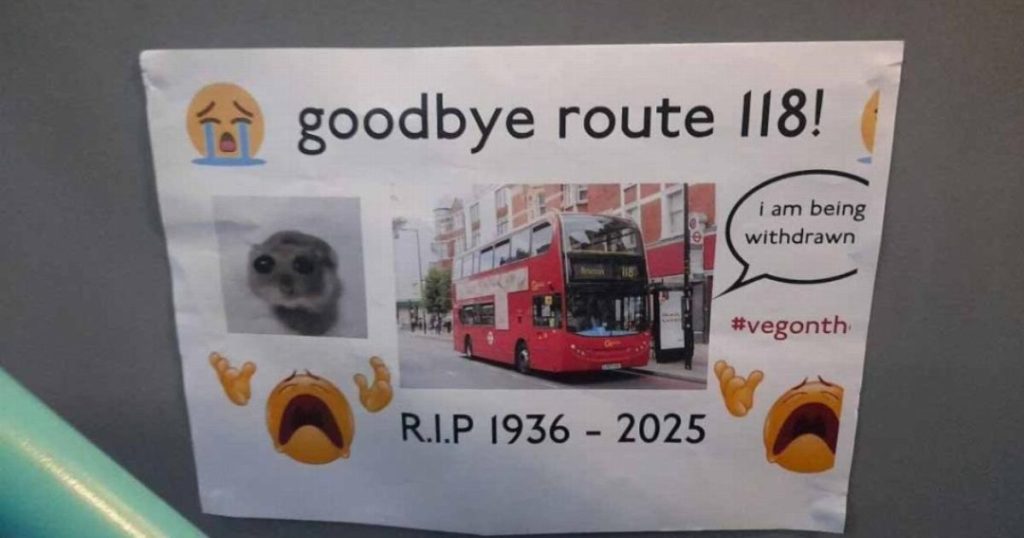The End of an Era: London Bids Farewell to the Iconic 118 Bus Route
Londoners are mourning the loss of a beloved piece of their city’s history with the retirement of the 118 bus route after 88 years of service. This iconic route, which plied between Morden and Brixton since 1936, made its final journey in the early hours of a Saturday morning, marking the end of an era for South London residents. The decision to axe the 118 came as part of a Transport for London (TfL) reshuffle aimed at streamlining bus services and addressing changing passenger demand. While a significant portion of the 118’s route will be covered by a revised 45 bus service, the unique character and history of the 118 are irreplaceable, leaving many residents with a sense of nostalgia and loss.
The 118 bus was more than just a mode of transport; it was a thread woven into the fabric of South London life. For generations, it served as a reliable connection for commuters, students, and families. Its distinctive blue interior lighting, a rarity among London buses, added to its charm and became a recognizable feature. Memories of journeys on the 118 are intertwined with the personal histories of countless Londoners, from childhood trips to school to daily commutes. The outpouring of sentiment following the announcement of its retirement underscores the deep connection residents had with this particular bus route.
TfL’s decision to discontinue the 118 was driven by practical considerations. Data indicated a decline in passenger demand on inner London routes, including those serving the Brixton Hill area. This decrease, attributed in part to changing commuting patterns and the impact of the pandemic, prompted TfL to re-evaluate its service allocation. The rationale behind the reshuffle was to optimize resources by redirecting them to areas experiencing higher demand and growth. While the logic is sound from a resource management perspective, it does little to assuage the emotional impact on those who relied on and cherished the 118.
The public consultation conducted by TfL prior to the changes revealed a significant degree of opposition. Sixteen percent of respondents expressed their disapproval, highlighting the importance of the 118 to the community. Concerns were raised about potential overcrowding on alternative routes and increased wait times, particularly during peak hours. Residents also questioned the long-term implications of reducing service frequency in areas where public transport remains essential. While TfL acknowledged these concerns, they maintained that the changes were necessary to ensure a sustainable and efficient bus network that reflects current travel patterns.
TfL defended its decision by emphasizing the need to adapt to evolving passenger needs and optimize resource allocation. The organization pointed to the significant drop in demand on inner London routes compared to pre-pandemic levels as justification for reducing service frequency in certain areas. They argued that reallocating resources to areas with higher demand would ultimately benefit a greater number of passengers and contribute to a more efficient public transport system. TfL also highlighted the new and improved connections provided by the revised routes, including access to essential medical facilities.
The retirement of the 118 bus serves as a poignant reminder of the ever-changing urban landscape and the complex interplay between practicality and sentimentality. While progress necessitates adaptation and the efficient allocation of resources, the loss of a familiar and cherished element of the cityscape inevitably evokes a sense of nostalgia and loss. The 118, with its distinctive blue lighting and decades of service, will remain etched in the memories of South Londoners, a symbol of a bygone era in the city’s public transport history.











